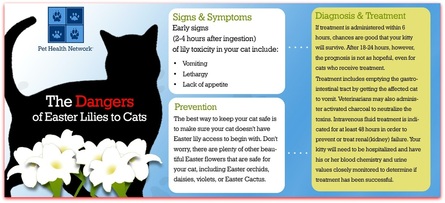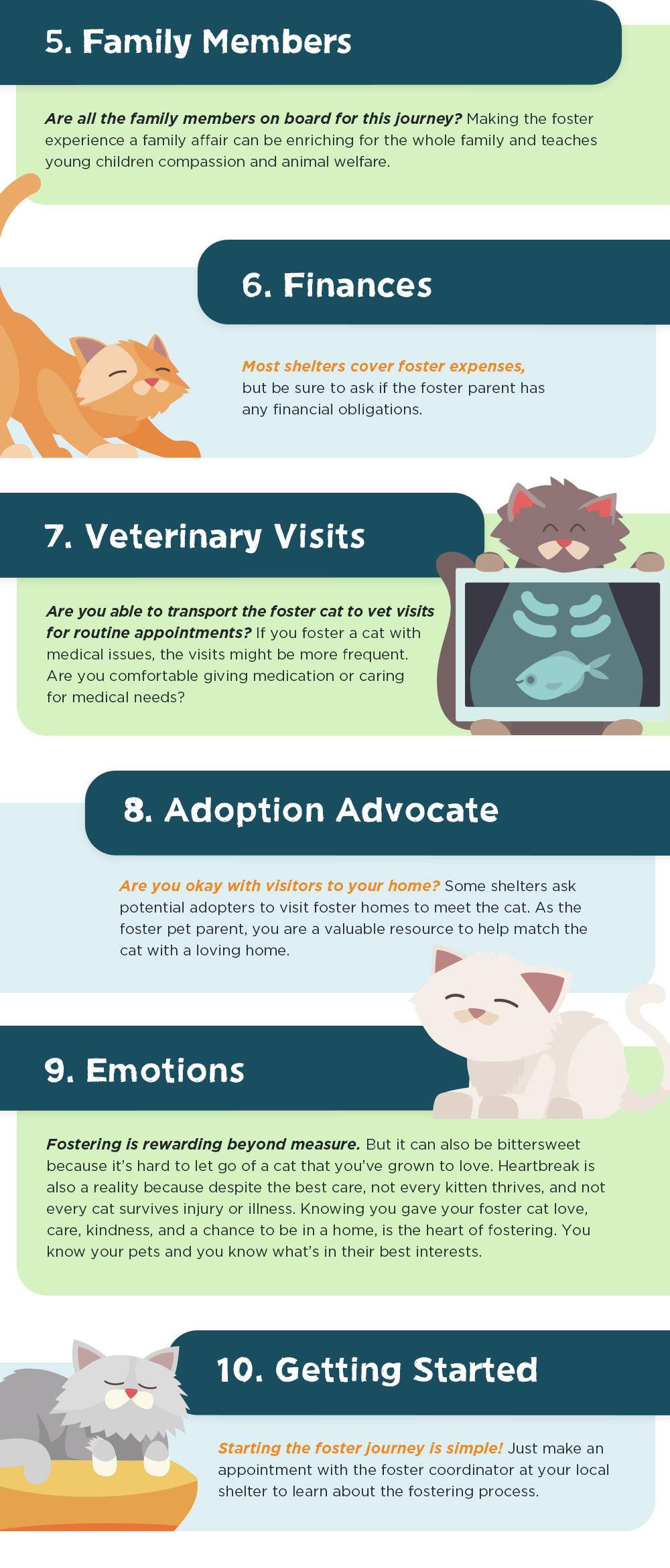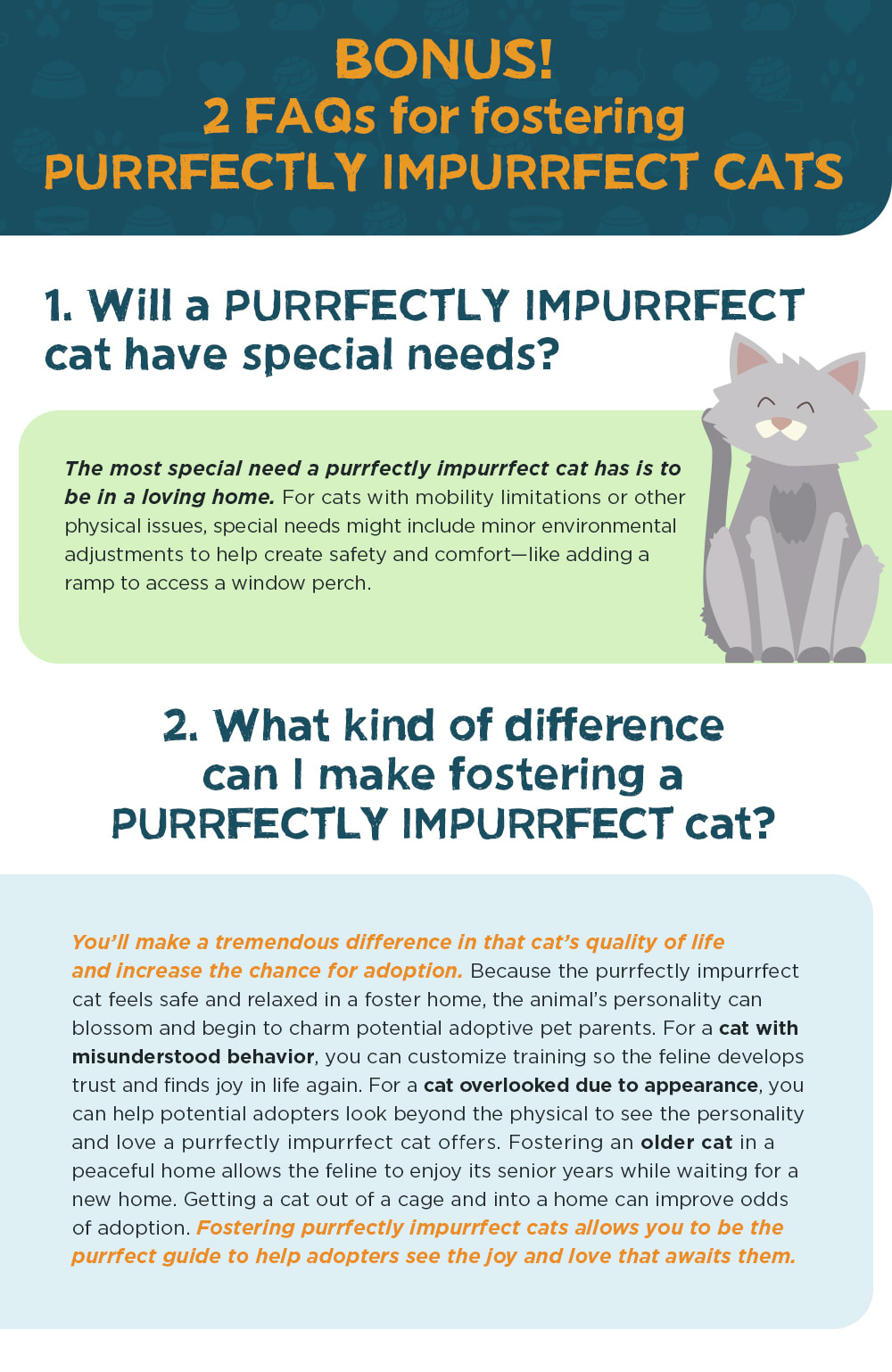 Dogs and Halloween go together like, well, dogs and anything. You never know. At Pet Supplies Plus, we get it. Dogs are part of the family and you want to include them in the fun stuff like trick-or-treating. While your pup may be a social butterfly at the dog park, Halloween is a whole different beast. The sights and sounds of trick-or-treating may be too much for your pet, causing them to get anxious and stressed. If you’re thinking about taking them out with the family for Halloween, ask yourself: Can they really handle the experience? If the answer is “yes,” “you know it” or “do dogs sniff butts?”, read on. We’ve put together some tips and suggestions that can help make it an exciting, fun-filled night for your boo. Pre-Trick-or-Treating Checklist The one thing you need to be for Halloween is prepared. That means having everything you need to make trick-or-treating as safe as possible for your dog. To ensure a good time will be had by all, don’t forget to bring along the following items: • Reflective Collar or Harness – You and everyone else will need to be able to see your dog when it’s dark. Make sure your dogs have their ID tags on, too. • A Good Leash – The last thing you want to happen on Halloween is getting separated from your pooch. • Flashlight – This will help you watch where you’re stepping and if you have to pick up any poop. • Poop Bags – Your dog could care less if it’s Halloween. When you gotta go, you gotta go. •Dog Treats – A tasty reward can help turn what might be a scary night into a positive experience. We suggest training treats because they’re a good size for on-the-go rewarding. Safety First, Second & Third We think pet costumes are awesome. We’re also biased. Despite our love of seeing a dachshund dressed up as a hot dog, we believe your pet’s happiness and safety are way more important than looking cute. Your fur baby must be comfortable wearing a pet costume. You also want to make sure the costume doesn’t limit their mobility or impair their vision in any way. Another point to ponder: Your dog should be able to respond to basic commands like “sit” and “stay.” Trust us, they’ll come in handy throughout your All Hallows’ Eve. Other things to consider: • Beware of yard décor – For your dog, there’s no such thing as a good scare. Halloween yard decorations can be super spooky and realistic. •Watch where they’re sniffing – Look out for stray candy and parts of people’s costumes that end up on the ground. These can be toxic to dogs (especially chocolate) or potential choking hazards. • Avoid traffic congestion – If three’s a crowd, imagine your dog trying to navigate through a parade of trick-or-treaters in the dark. Try to seek out less-busier pathways. When to Call It a Night Even if your dog does okay at first, they may raise the white flag at any given moment. With so much going on, they can get easily overstimulated or stressed. Here are some ways to tell when it’s time to head back home: • Panting or barking • Hiding or shaking • Dilated pupils • Trying to run away from crowds • Tucking their tail between their legs • Drooling • Lots of yawning or licking of lips • Barking, whining or growling • Pulling on their leash • Refusing to walk Conclusion There’s no disguising it. Halloween with your dog may require some work and patience, but it can work. If you decide to take your pup trick-or-treating, bring along everything you would for a nightly dog walk plus some treats. Pet costumes are great only if your dog is cool about wearing one. Be your pet’s eyes and ears, watching out for any potential dangers and risks. Last but not least, know when your fur baby has had enough for one night. By following these suggestions, you can make Halloween a real treat for your dog. Tips provided by: Pet Supplies Plus
Information Source: click here
0 Comments
Club Cat | Jan 24, 2023 | animal health, Pet care, pet health, Veterinary | 0 comments
Obviously, every pet owner wants their four-legged friend to live a long and healthy life. Unfortunately, though, our beloved pets don’t live forever. Eventually, you’ll be caring for a senior pet and enjoying your animal companion’s golden years. This can be a difficult time filled with mixed emotions. But the following tips can help you shop for them, make plans regarding their veterinary care, deal with your own stress, and more. Photo by Ansar Muhammad on Pexels Check Product ReviewsWith your pet getting older and needing more care, you might have started looking for some new products for them. For example, maybe you’ve been searching for a comfortable bed where they can spend long hours sleeping, toys that will be easy for them to chew, or sweaters and booties they can wear during walks when it’s cold outside. But with thousands of pet care products on the market, how can you choose the right items? You’ll want to check out several reviews for any product before you decide on what to purchase. Keep an eye out for reviews written by veterinarians. If you find products recommended by vets, you can rest assured that you’re making the best decisions for your pet’s well-being. Reduce Your Stress Are you feeling stressed out with your pet needing a higher level of care? This is perfectly normal – although you might feel guilty about these emotions, there’s no denying that caring for a senior pet can be challenging, and some days, it can leave you exhausted. But if you’re stressed, practicing self-care is crucial. This is because your pet can actually pick up on your stress, and if you’re upset, they might start feeling more anxious, too. What if you’re struggling to balance work with pet care? This might be a good time to talk to your supervisor about adjusting your schedule. For instance, you can check in and see if you’d be able to work from home a couple of days per week. If that doesn’t work out, you could budget for a pet sitter to watch your pet for part of the week. Financing Vet Bills Dealing with expensive vet bills can be one of the most frustrating aspects of pet ownership – and the cost of veterinary care only gets higher as your pet ages. Perhaps you’re struggling to cover these expenses now, and you’re wondering if you should try to pay off these vet bills with a credit card. But before you run up credit card debt, look into better payment options. The Dodo recommends asking your vet if they could offer you a long-term payment plan, which could come with a discount. If you don’t have the money to pay for vet bills, one option is California pet insurance, which can help you cover those costs. However, it’s important to spend some time researching the different policies available in the state before making any decisions. You may also discover that the amount you’ll pay per month depends on what type of pet you own. Administering MedicationPhoto by Gustavo Fring on Pexels Does your pet need to take medication on a regular basis? Maybe you’re frustrated because your pet tries to refuse medication, and you don’t know how to get them to take it. If you can relate to this scenario, rest assured that nearly every pet owner has been in your shoes at one point – and there are plenty of simple solutions! FirstVet recommends checking with your vet to see if your pet’s medication can be given with food. If so, you can hide a pill or tablet within wet food or treats to disguise it from your pet. Exercising Your PetYes, senior pets still need exercise. However, your pet can’t be as active as they once were. You’ll need to modify their activity to ensure that it’s appropriate for their age and abilities. You want to make sure that your pet won’t get hurt when they exercise! So, what kind of exercise is right for senior pets? Experts recommend giving your senior cat about 15 to 20 minutes of exercise per day. You might want to play in the backyard or go for a walk around your neighborhood. Keep an eye on your pet at all times so that you can call it quits if they seem too tired. Of course, the answer to this question is somewhat dependent on your pet, so it’s a good idea to ask your vet for recommendations. Finding the Right DietWhat should your senior pet eat? Again, the answer to this question is highly individual – but if you’ve noticed that your cat’s digestive system seems to have changed, it’s also time to change their diet. Many senior pets need dietary adjustments as they get older, so rest assured that this is perfectly normal. You may need to purchase food formulated for sensitive stomachs, or food that is supplemented with different vitamins and minerals. Your pet may also need to switch from wet food to dry food, or vice versa. By: Liam Gibson As the cost of living goes up, one member of the American family is especially at risk - pets. Faced with mounting pressure to maintain living standards in their households, many pet owners are surrendering their pets. Expenses associated with pets are soaring, from the everyday cost of food to the unexpected shock of vet bills. The phenomenon is not only seen in the US but also Canada, Australia, the UK, and other countries. For many, the abandonment wave signals a painful crash landing to the pandemic ‘pet boom', which saw record numbers of home-bound people purchase pets over the last couple of years. There are numerous factors at play, but the most commonly cited reasons pet owners gave for surrendering in a recent Forbes survey were a combination of the following: The rising cost of pet food, unaffordable vet bills, and difficulty finding pet-friendly residences when moving home. Although each poses challenges to pet owners, there are methods for managing costs and keeping your pet through these turbulent times. Locally, Pima Animal Care Shelter has fluctuated between 'extreme' and 'critical' status throughout the course of the year, offering frequent adoption specials in an effort to clear out kennel space for new arrivals. PACC's Director of Animal Services Monica Dangler said the shelter's approach is to get the most adoptable dogs into foster care or new permanent homes, in order to free up resources for the most difficult-to-place dogs within the shelter. “With 519 dogs in the shelter, we need to create kennel space for dogs,” Dangler said. “Getting the dogs on the Preventing Euthanasia List adopted, fostered, or sent to rescue allows us to focus on finding homes for the dogs who need more training, medical care, or need a specific type of home.” The shelter hasn't had to euthanize animals due to lack of space since 2016. Food Costs Bite Pet food costs are outpacing regular inflation - a phenomenon sometimes referred to as ‘ petflation.' US pet food inflation grew 9.1% in July this year versus July 2021, edging ahead of the 8.5% increase in the total Consumer Price Index (CPI) for last month. There are several possible means of making the food cost manageable and essential to keep your pet going. Owners can consider getting the cheapest kibble possible, even if it means changing up Fido's favorite brand; that probably won't do him any harm. There is scant research to indicate more expensive pet foods deliver better health outcomes, according to Joseph Bartges, a veterinary nutritionist. Bartges said this year that no conclusive studies have been done that show food cost as a predictor of a pet's health. If the cheapest brands are still out of reach, there is the option of human food. While this is a hotly debated topic, Bartges also says there is little evidence that moderate amounts are unhealthy for dogs, so long as owners avoid foods that are known to harm dogs (see this list ). One potential solution is food banks, which have been in high demand in the UK, where pet food has skyrocketed 15% since January. Charities like the Royal Society for the Prevention of Cruelty to Animals (RSPCA) are now racing to keep up and teaming up with existing food banks that typically feed people to add pet food to their stockpile. There are plenty of similar services in the US, also known as pet food pantries. Owners looking for local food banks in their state can browse a directory for pet food banks across the nation. Vet Bills Sting Increasing medical costs are putting pets at peril and families' finances at risk. Some alarming new survey results reveal how underprepared pet parents are for rising medical costs. Forbes recently surveyed 2,000 cat and dog owners and found that 42% of pet carers cannot afford a surprise vet bill of $1,000. One solution may be taking out pet insurance. Unfortunately, although pet insurance has become increasingly popular in recent years, the vast majority - around 80% of owners - remain uninsured. According to Forbes Advisor analysis, pet insurance costs, on average, $35 per month for dogs and $28 a month for cats. Those plans include expenses for both accidents and illnesses, with $5,000 in annual coverage. Each pet owner must weigh whether insurance is a good choice for them. While this adds a little extra to the monthly budget, it prepares owners for the worst-case scenarios. Yet if having insurance means the difference between keeping and giving up a pet during tough times, many owners will likely consider it worthwhile. ‘No Pets Allowed' Housing is another major issue that is pulling pets and their owners apart. As rent continues to skyrocket, many pet owners are being forced to downsize or move into more affordable neighborhoods, and their pets cannot always come with them. Finding a new pet-friendly residence can be difficult at short notice, so many owners are saying goodbye to their furry friends. One animal shelter in Tucson reports that housing-related surrenders have tripled in the last year. Though this sounds dire, there are still pathways forward. Pet owners who are determined to bring their pets back under their new roof can seek out temporary foster care programs, which some shelters offer. Through these arrangements, pet owners can leave their pets for several weeks or months while they get their circumstances in order. Then, once they have moved into a new, pet-friendly residence, they can bring their pet to their new home. There are ways the wider community can lend a hand too. Homeowners who aren't restricted by rental contracts, for instance, can offer to adopt or foster a pet from a shelter and give pets a new start. One shelter in Kansas City, Missouri, KC Pet Project, is becoming inundated with incoming surrenders, expecting the total number to surge to 15,000, up from roughly 10,000 in recent years. There are dozens more shelters across the country like this. "We need the community to help us get through this - through adoptions, fostering and just helping us save lives," said KC Pet Project's Tori Fugate. "I highly encourage you to reach out and get involved with your local shelter." As the economy rollercoasters from the highs of post-pandemic recovery to the brink of recession, many pet owners are finding their lives have become too unpredictable to commit to pet ownership. Unfortunately, many were underprepared for the volatility of our times and are now forced to make heart-wrenching choices. Pets are known for being fiercely loyal to their owners; many owners will try their utmost to keep them by their side. By making sound choices during these challenging times, pet owners can lighten their load and find the wherewithal to make it through. Keep pets safe in the heatHow to keep animals cool when temperatures soar.
The summer months can be uncomfortable—even dangerous—for pets and people. It's difficult enough simply to cope with rising temperatures, let alone thick humidity, but things really get tough in areas that are hit with the double blow of intense heat and storm-caused power outages, sometimes with tragic results. We can help you keep your pets safe and cool this summer. Follow our tips for helping everyone in your family stay healthy while hot. Practice basic summer safety NEVER LEAVE YOUR PETS IN A PARKED CAR Not even for a minute! Not even with the car running and air conditioner on. On a warm day, temperatures inside a vehicle can rise rapidly to dangerous levels. On an 85-degree day, for example, the temperature inside a car with the windows opened slightly can reach 102 degrees within 10 minutes. After 30 minutes, the temperature will reach 120 degrees. Your pet may suffer irreversible organ damage or die. Learn how to help a pet left inside a hot car by taking action or calling for help. Local law enforcement can follow this handy guide [PDF] on how to proceed. Watch the humidity "It's important to remember that it's not just the ambient temperature, but also the humidity that can affect your pet," says Dr. Barry Kellogg, VMD, of the Humane Society Veterinary Medical Association. "Animals pant to evaporate moisture from their lungs, which takes heat away from their body. If the humidity is too high, they are unable to cool themselves and their temperature will skyrocket to dangerous levels—very quickly." Taking a dog's temperature will quickly tell you if there is a serious problem. Dogs' temperatures should not reach over 104 degrees. If your dog's temperature does, follow the instructions below for treating heat stroke. Pet Cooling Items on Amazon.com Limit exercise on hot days Take care when exercising your pet. Adjust intensity and duration of exercise in accordance with the temperature. On very hot days, limit exercise to early morning or evening hours, and be especially careful with pets with white-colored ears, who are more susceptible to skin cancer, and short-nosed pets, who typically have difficulty breathing. Asphalt gets very hot and can burn your pet's paws, so walk your dog on the grass if possible. Always carry water with you to keep your dog from dehydrating. Don't rely on a fan Pets respond differently to heat than humans do. (Dogs, for instance, sweat primarily through their feet.) And fans don't cool off pets as effectively as they do people. Provide ample shade and water Any time your pet is outside, make sure they have protection from heat and sun and plenty of fresh, cold water. In heat waves, add ice to water when possible. Tree shade and tarps are ideal because they don't obstruct air flow. A doghouse does not provide relief from heat—in fact, it makes it worse. Cool your pet inside and out Whip up a batch of quick and easy DIY pupsicles for dogs. And always provide water, whether your pets are inside or out with you. Keep your pet from overheating indoors or out with a cooling body wrap, vest or mat. Soak these products in cool water, and they'll stay cool (but usually dry) for up to three days. If your dog doesn't find baths stressful, see if they enjoy a cooling soak. Watch for signs of heatstroke Extreme temperatures can cause heatstroke. Some signs of heatstroke are heavy panting, glazed eyes, a rapid heartbeat, difficulty breathing, excessive thirst, lethargy, fever, dizziness, lack of coordination, profuse salivation, vomiting, a deep red or purple tongue, seizure and unconsciousness. Animals are at particular risk for heat stroke if they are very old, very young, overweight, not conditioned to prolonged exercise, or have heart or respiratory disease. Some breeds of dogs—like boxers, pugs, shih tzus and other dogs and cats with short muzzles—will have a much harder time breathing in extreme heat. How to treat a pet suffering from heatstroke Move your pet into the shade or an air-conditioned area. Apply ice packs or cold towels to their head, neck and chest or run cool (not cold) water over them. Let them drink small amounts of cool water or lick ice cubes. Take them directly to a veterinarian. Prepare for power outages Before a summer storm takes out the power in your home, create a disaster plan to keep your pets safe from heat stroke and other temperature-related trouble. Information Resource: The Humane Society of the United States https://www.humanesociety.org/resources/keep-pets-safe-heat It can take just 10 minutes for it to get almost 20° F hotter inside a car. Automobile glass traps heat from sunlight, so parking in the shade or leaving the windows open doesn’t help either. Leaving your dog inside the car can cause heatstroke. If you think your dog has heatstroke:
Tips provided by Pet Supplies Plus
Keep your co-pilot happy & safe during your trip.
1. Bring along a sturdy leash and collar with ID tags. Make sure you have their license and proof of rabies vaccination handy. 2. While you're driving, keep your dog in a crate or use a harness that attaches to the seat belt to make sure they're safe. Keep cats safe and secure in a carrier while in the car. 3. Never leave your pet alone in a closed car, especially during the summertime when cars reach dangerously hot temps fast. If you need to step out of the car with your pet, make sure a family member or friend can keep them company. 4. Make sure your pet has fresh water to drink. 5. Pit Stop! Plan ahead for extra stops for potty breaks and exercise time. Always be sure to bring along waste bags to clean up after your dog. Tips provided by Pet Supplies Plus Easy Does It: Pet Anxiety
A kitchen overflowing with guests, loud claps of thunder, a change in routine due to a new job…all reasons for that creeping feeling of anxiety to take over. As for your sweet (and occasionally sassy) tuxedo cat, these situations may leave her feeling anxious too. Reaching for her favorite toy, you’re glad that you’ve learned some helpful tips to recognize and treat your furry friend’s anxiety. Examples of anxiety triggers: -Moving to a new home. Moving from one house or apartment to another involves a lot of logistics, and your cat can pick up on the changes. -Loud noises. Cats have a significantly higher range of hearing than humans. A high-speed car chase in a movie could have her on edge and not seeming herself even in her own home. Her reaction to thunder and fireworks? She’ll head straight to the basement with her tail down. -New baby or pet. The joy of introducing a new member of the family to your current pet can bring anxiety too. New smells, new sights, new things…new everything! Tips to calm anxiety: -Moving to a new home. Keep your kitty confined to a bathroom or smaller bedroom until she seems comfortable enough to explore her new abode. Make sure her creature comforts are nearby: food, water, litter box, toys and blankets. Visit her frequently, and allow play time in the new house in increments. Soon she’ll claim her napping spot and will let everyone in the house know! -Loud noises. Try your best to reduce or remove the noise. Turn off the TV, or comfort your pet in a quieter room. A calmer atmosphere will benefit you both. -New baby or pet. A curious baby will probably want to kiss and hug the family cat or dog, but let your pet approach the little guy on their time, and always supervise. A new furry buddy will require monitoring and gradual interaction too. Reassure your cat that she’ll continue to have your attention by spending quality time with her doing what she loves: being groomed, getting special treats, and playing with her favorite catnip toy. Thinking of medication? Make an appointment with your veterinarian to discuss options. Tell the vet about your concerns and provide examples of how your cat has reacted to stressors. One option is fluoxetine, a medication equivalent to Prozac for humans. Fluoxetine can help ease separation anxiety and overall anxiety. When you find out what works in easing anxiety in your cat, both of you will feel a little better. By Carrie Cammauf  March 20-26, 2016, is National Poison Prevention Week. And here at Furever Home, we want to help you keep your cats, dogs, rabbits and all other pets safe. First and foremost, always have your vet’s phone number handy. There is also a national hotline you can call: 855.764.7661. You can learn more on their website www.petpoisonhelpline.com. This site also includes a very detailed list of items that may be harmful to your pets, such as some common household items:
If your pet accidentally ingested something harmful, it could take twenty minutes up to a few days for them to begin showing a sign. And, as the weather gets warmer and people begin spring cleaning and opening windows and spending time outside, the danger increases. How to Keep Your Pets Safe
What to Do if Your Pet is Accidentally Poisoned
What Not to Do
Questions? Let us know in the comments section.  Kitten season is my favorite time of year. Furever Home typically helps 75 new kittens find their loving furever homes and, while most of the kittens are being cared for by our generous foster families (and a big thank you to them – we couldn’t do it without your support!), many kittens aren’t as lucky. Lancaster County’s feral cat population was up 60% last year, with estimates showing that there could be 84,000 feral cats in the county. It is a big issue. Here are some guidelines on how you can help. The difference between stray and feral cats While stray and feral cats share some commonalities there is a big difference. Stray cats are socialized to humans – in most cases they were once pets who have either become lost or were, unfortunately, abandoned, while feral cats have had very limited (or no) interactions with humans and have reverted to a wild state. Stray cats may become feral as their contact with humans dwindles or, in a happier scenario, become loving pets again if they are taken in. Feral cats typically fear humans. In most cases, unless they are very young at the time of adoption, they do not enjoy living indoors if someone were to take them in. They do, however, bond with their colony. Although you might wish to rehabilitate a feral cat, if they are not socialized by about 5 month of age, it is almost impossible to turn them around. They are best left to live their lives outside. How to tell the difference – a few signs
One of the most important things for you to remember is that feral is a designation of behavior, not location. Should I approach a cat if I see one outside? If you are thinking about approaching an unknown cat you find outside, be cautious. Cat bites and scratches can be harmful. Follow the lead of the cat and if it is friendly to you, take your time and get to know it to build up trust. Stray cats may tolerate touching while feral cats will not – not even by a caretaker who feeds it. As you get to know a stray it will relax over time while a feral cat will remain tense. If they feel threatened, a stray will hiss while a feral cat could lash out aggressively. As stated above, feral cats tend to live in colonies and, together, they will defend their territory. They typically live where they can find food and shelter – such as an abandoned building near a restaurant dumpster or under the porch of someone who feeds them even though there is no other interaction. So how can I help? With a stray, begin by leaving food out for it at the same time each day. As it comes around more, slowly get to know it until the trust is there and you can pet it. If you’re thinking about taking it into your home, be sure to take it to a vet first for shots, neutering, flea treatment and a health checkup – especially if you have other pets. A trip to the groomer will probably also be in order. Whether or not you take the cat in, the first thing you should do is to have the animal scanned for a microchip. Many animals are given away or sent to shelters while their owners are frantically looking for them. Call the local vets and give a description of the animal, take a picture and make a flyer and post it in local vet offices, supermarkets and public places. Ask around the neighborhood. Facebook is an excellent way to advertise a found animal. Craigslist has a very active lost and found pet section in Lancaster. FIND TOBY in PA, lancaster county pa lost found & rehoming cats and Lost Pets of PA are excellent Facebook resources dedicated to posting lost and found animals. If you are unsuccessful finding an owner, you may want to attempt to contact a no-kill shelter to see if they are taking in animals. Be aware that most rescues are very overwhelmed over kitten season and cannot accept the high number of requests that they get to take in animals. Furever Home gets about 30 calls and email per week from people asking them to take in cats. Feral cats, on the other hand, should not be approached. If you have feral cats in your neighborhood, the responsible thing to do is to contact a local feral clinic such as Pet Pantry of Lancaster County and ask to rent a "have-a-heart" trap, which humanely traps the cats. This is a complicated process because you must trap the animal the night before the surgery and take away its food. Call first and Pet Pantry will give you instructions on what is involved in trapping and having an animal spayed/neutered. It’s important to note that you must call the clinic for an appointment before trapping the cat as you can’t leave the cat in the trap longer than 12-18 hours. After surgery, it is a wonderful help if you provide shelters for the feral cats. For great suggestions, see the website of Alley Cat Allies for ideas on how to build outdoor shelters. Furever Home is also happy to assist you to build an outdoor shelter. The final step is providing regular food and water for your outdoor friends. Furever Home has five colonies of feral cats that we feed, helping over 100 cats. And we greatly appreciate any dry cat food donations to help us with this cause. To see our full wish list, click here. To donate and help us with this county-wide issue, please visit http://www.fureverhomeadoptioncenter.com/donate.html. Questions? Let us know in the comments section. |
Archives
October 2023
Categories |
Donate Here |
Contact Us717-560-6400 |





